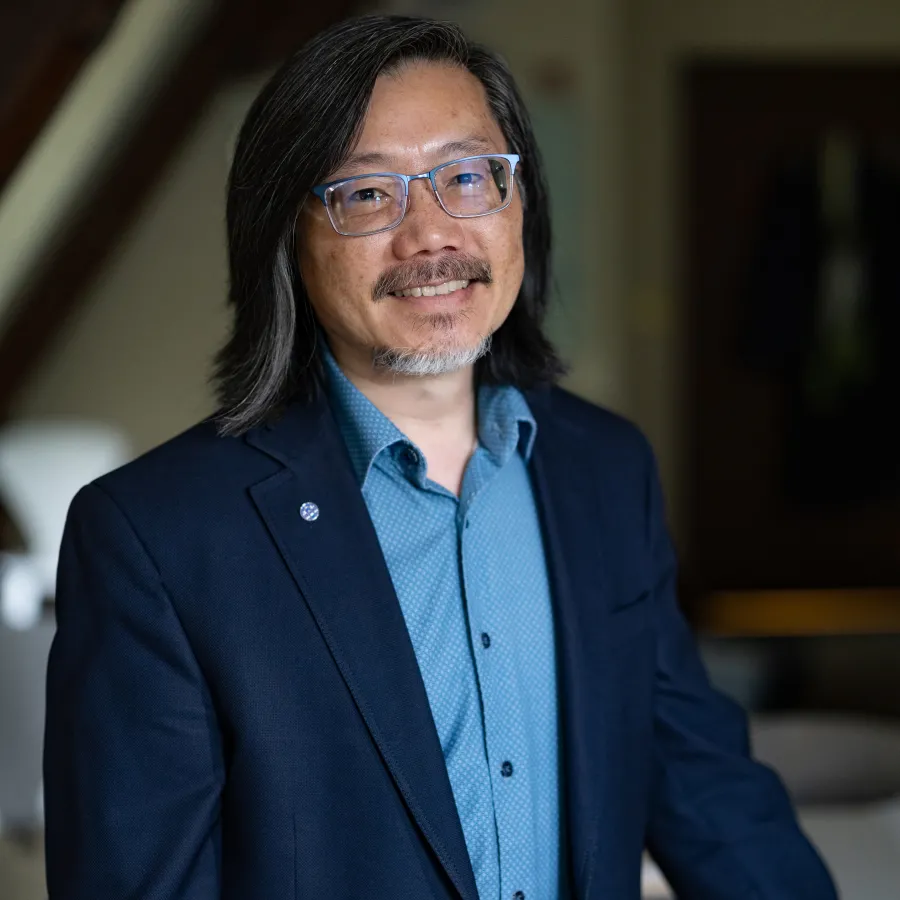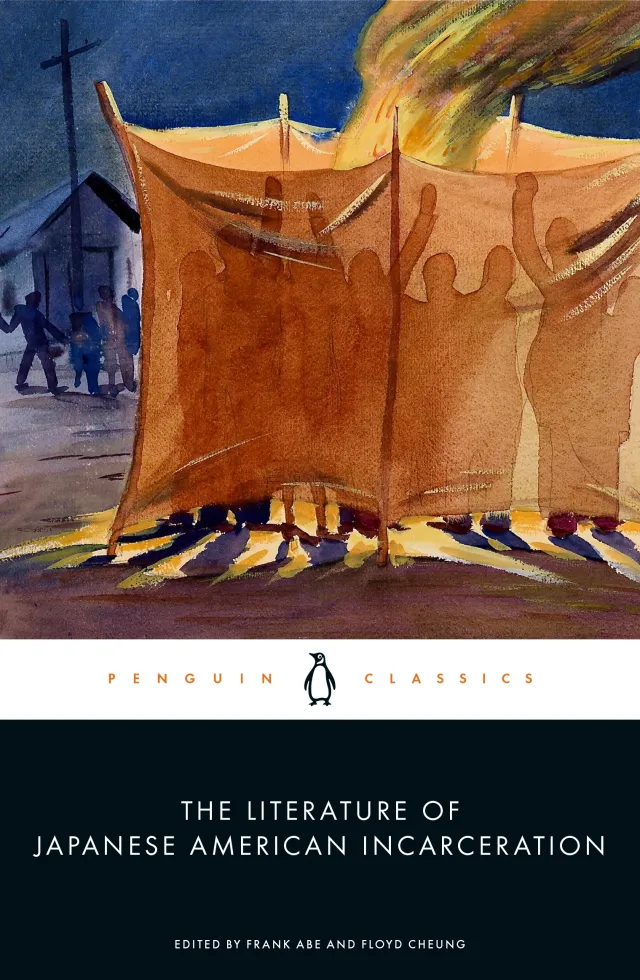Recovering Lost Literary Voices
Faculty
Professor Floyd Cheung has published an “essential” anthology of writing by Japanese Americans incarcerated during World War II
Published June 27, 2024
Professor Floyd Cheung says recovering lost and forgotten writing by Asian Americans has long been part of his “calling as a scholar.”
Cheung, who is professor of English language and literature and American studies and vice president for equity and inclusion, has spent years researching, writing, and teaching about overlooked Asian American writers—“doing my best to explain what they were trying to do with literature in their particular moment,” he says.
His latest work, The Literature of Japanese American Incarceration, focuses on a historical moment during World War II, when 120,000 Japanese and Japanese American residents of the U.S. were forcibly removed from their homes and sent to government-run incarceration camps.
Cheung’s book, which he co-edited with journalist and author Frank Abe, has already sold out of its first printing since being published in May, and a second printing is now underway. The New Yorker magazine called the anthology “an essential volume,” one that provides rare emotional detail through first-person accounts from “patriotic idealists, righteous firebrands, and downtrodden cynics alike.”
Cheung says the inspiration for the book “originated in my teaching at Smith.” Since 2001, he has taught a course on “Narratives of Internment” inspired by student questions about the experience of Japanese American incarceration. (The term “incarceration” has supplanted the term “internment,” Cheung says, since the latter suggests that Japanese Americans were tried and found to be prisoners of war, as opposed to the way they were rounded up based solely on their race.)
In 2007, he and his students visited a former camp at Manzanar, California, now a National Historic Site. Cheung also sees a connection between his explorations of Asian American literature and his work as head of the college’s Office for Equity and Inclusion.
“I’ve spent most of my scholarly career listening for Asian American voices that have not been heard,” he says. “That is not unlike equity and inclusion work, which is also about listening to less established voices and paying attention to who is not in the room or hasn’t been invited to the table.”
Here’s what else Cheung had to say in a recent interview about his new book.
What were you hoping to achieve with this new work?
“My co-editor, Frank Abe, wanted to get the message out that Japanese Americans weren’t passive, but offered resistance to their incarceration. Not all incarcerees quietly complied, as some narratives—including government newsreel films like Japanese Relocation—suggest. I wanted to create a literary text and also a teaching text; a book that would serve teachers and students.
“We both wanted a diversity of voices—including women’s voices. In the book we have recovered dozens of works that have been overlooked in the archives or remain untranslated in Japanese. At first, we hoped to juxtapose these less familiar selections with work by better known writers like Miné Okubo and Julie Otsuka, but we had to make hard choices to fit the confines of a publishable volume. We ended up favoring harder-to-find literature.
“For the cover, we also favored a lesser-known artist, Gene Sogioka, who once illustrated for Disney, having worked on Dumbo, Bambi, and Fantasia. During the war years, he was incarcerated in Poston, Arizona, where he continued to make art [including the book’s cover painting].”
How did you go about finding these overlooked narratives?
“Some of the 68 selections came from my course reader [for Narratives of Internment]. Others were identified in different ways, including hiring Smith students to comb through camp newsletters and other publications to identify selections to consider. We also drew upon Frank Abe’s vast personal archive of incarceration documents that he’s been collecting for more than 40 years. He’s a third-generation Japanese American whose father was incarcerated at Heart Mountain. We asked colleagues in the field for their suggestions. And we hired Andrew Way Leong to translate selected works for the anthology, including two selections from the camp journal from Tule Lake, Tessaku, which featured literature in Japanese.”
Your definition of literature in the book is broad, incorporating letters, poems, diary, and newsletter entries.
“In high school and college, I learned to love what might be called belles-lettres, i.e., fine or beautiful writing, usually in the genres of poetry, fiction, and drama. In graduate school, I came to appreciate a broader understanding of what could count as literature. For instance, unpublished works could have great aesthetic and social value even if they weren’t recognized during their author’s lifetime. In addition, works in genres such as letters, diaries, and creative nonfiction could have great value as well, but they need to be considered within their own conventions and constraints—not against supposedly universal standards that some of us associate with so-called great writing.”
Do you have a favorite selection in the book?
“One is ‘Lil’ Yokohama’ by Toshio Mori, a story about the Japanese American community enjoying a nice day at the baseball field. It gives you a sense of ordinary life before the war and incarceration. I think this version of Mori’s manuscript was accepted before the war, but then Pearl Harbor happened and they put a pause on publication. The book eventually came out in 1949.”
You grew up in the west where the camps were located. Did you encounter any of this history in school?
“I have a dim memory of learning about it in my high school U.S. history class, but I really learned about the incarceration when I delved into Asian American studies in graduate school. World War II was a time of great stress and the U.S. rose to the occasion in many ways. The Allies fought a righteous war against the Axis and won. At the same time, the U.S. government did not live up to its promise to treat all citizens—and even aliens—justly, which is ensconced in the Fourteenth Amendment. As the 1983 report of the Commission on Wartime Relocation and Internment of Civilians found, ‘the broad historical causes that shaped these decisions were race prejudice, war hysteria and a failure of political leadership.’”
What are lessons for our present day from the literature of Japanese American incarceration?
“We need to remain ever vigilant against discriminating against people based on their race and other perceived markers of difference. In the anthology, Fred Korematsu’s essay asks, ‘Do We Really Need to Relearn the Lessons of Japanese American Internment?’ in the wake of anti-Arab and anti-Muslim bias following 9/11. And Brandon Shimoda writes with exasperation, ‘We Have Been Here Before,’ as he deplores the fact of immigrant families being separated at the border and incarcerated in facilities once used to imprison first-generation Japanese American leaders. I hope this book will help readers understand Japanese American incarceration in a more nuanced way, its continuing relevance, and that ‘never again is now.’”

